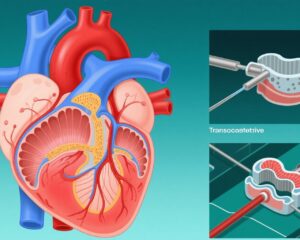Introduction: The Exercise Paradox—Is More Always Better?
We have long known that physical exercise is a cornerstone of healthy living. Public health messages emphasize moving more, sweating more, and the notion that more exercise inevitably leads to greater health benefits has been deeply ingrained. Yet, emerging scientific evidence complicates this picture: it suggests that when it comes to exercise, more is not always better. Could excessive exercise actually undermine health and accelerate biological aging?
A recent authoritative prospective twin study published in the European Journal of Epidemiology (2025) titled “The associations of long-term physical activity in adulthood with later biological ageing and all-cause mortality” explores exactly this question. This research provides an insightful, nuanced view on how different levels of physical activity relate to biological age and mortality risk.
Scientific and Clinical Evidence: The U-Shaped Relationship Between Exercise and Aging
This prospective study followed a large cohort of adult twins to compare their long-term physical activity habits with measures of biological aging and mortality. Biological age was assessed by cellular and molecular markers reflecting the body’s aging process more accurately than chronological age.
Key findings included:
- Individuals engaging in moderate levels of physical activity — specifically about 150 minutes per week of moderate-intensity exercise such as brisk walking, cycling, or swimming — exhibited the slowest rate of biological aging. Their cells showed less aging-related deterioration.
- Completely sedentary participants demonstrated clear signs of accelerated biological aging, marking them as a high-risk group for premature bodily aging and related health issues.
- Strikingly, participants with extremely high levels of exercise, considered “top-tier” or intensive athletes, paradoxically had a biological age roughly 1.2 years higher than the moderate group. This finding suggests excessive exercise could impose physical stress that undermines some health benefits.
The Goldilocks Zone: Around 150 Minutes of Moderate Exercise Weekly
The World Health Organization and many national health agencies have long recommended at least 150 minutes of moderate-intensity physical activity weekly. This study reinforces that benchmark as a sweet spot:
- Death rates among sedentary individuals were alarmingly high — up to 38.8% over the study period.
- As activity levels increased from sedentary to moderate, and even vigorous exercise, mortality rates decreased stepwise.
- However, while increasing exercise lowers mortality, the substantial health benefits are optimized at moderate levels rather than extreme volumes.
Beyond Exercise: The Importance of a Holistic Healthy Lifestyle
One surprising insight from the study was that when controlling for confounders such as smoking status, alcohol consumption, and body weight, the independent protective effect from exercise alone was about 7%. This means exercise is one important piece of the puzzle but not the sole answer.
The interplay between overall lifestyle habits matters greatly. Maintaining a balanced diet, avoiding tobacco, moderating alcohol intake, managing stress, and getting adequate sleep collectively amplify the health benefits that exercise brings.
The Timing Factor: Early and Consistent Exercise Yields the Best Outcomes
The temporal dimension is crucial: the study revealed that the positive impacts of physical activity on mortality were most prominent in the first 20 years of follow-up. Starting exercise habits early in adulthood and maintaining consistent activity over time confers significant long-term protection.
By promoting healthy cellular mechanisms and longevity pathways early on, consistent exercise can delay aging processes and reduce the onset of age-related diseases.
Common Misconceptions About Exercise Intensity and Duration
Misconceptions abound around physical activity:
| Misconception | Reality |
|————————————-|——————————————————|
| More exercise always improves health| Excessive exercise can increase physical stress and accelerate biological aging in some cases |
| Sweating more means better workout | Sweating is only a sign of thermoregulation, not necessarily exercise effectiveness |
| If I don’t have time for 60 minutes daily, it’s not worth exercising| Even 150 minutes spread over the week, at moderate intensity, has proven benefits |
Practical Recommendations: Achieving a Balanced Exercise Routine
For most people, adopting the following guidelines can maximize health benefits without risking overtraining:
1. Target 150 minutes weekly of moderate-intensity exercise such as brisk walking, swimming, or cycling.
2. Incorporate variety—mix aerobic, resistance, and flexibility exercises.
3. Avoid prolonged sitting; take short, frequent movement breaks.
4. Listen to your body—rest and recover to prevent overtraining.
5. Combine exercise with healthy lifestyle choices including balanced nutrition, sufficient sleep, and stress management.
Patient Scenario: Emily’s Journey to Healthy Aging
Emily, a 45-year-old office worker, had always believed that if she couldn’t spend hours at the gym daily, her exercise wouldn’t count. Sedentary most of her day, she began experiencing low energy and frequent colds.
After learning about the ‘‘exercise U-shaped curve’’ from her physician, she set a target of walking briskly for 30 minutes five days a week, often joined by friends or family. Over two years, she noticed improved stamina, better sleep, and a positive mood.
Emily embodies the moderate exercise ideal—consistent, enjoyable, and manageable. Her experience shows that balanced exercise, even without extremes, supports healthy aging and longevity.
Expert Insights: Moderation is Key
Dr. Anne Kankaanpää, the lead author of the study, cautions against both inactivity and excessive exercise extremes. She emphasizes, “Our findings highlight that exercise is not a ‘more is better’ scenario. Moderate, consistent physical activity paired with good lifestyle habits offers the best protection against aging and mortality.”
Conclusion: Striking the Right Balance in Exercise for Longevity
This landmark twin study reshapes our understanding of physical activity’s role in aging and survival. It demonstrates that:
– Both inactivity and extreme exercise can accelerate biological aging.
– Moderate exercise following established health guidelines slows aging effectively and reduces mortality.
– Exercise is most effective when bundled with healthy lifestyle behaviors.
– Early and consistent adoption of exercise yields lasting benefits.
In today’s hectic world, the takeaway is clear: regular moderate exercise is a sustainable, scientifically-proven approach to healthy aging. Avoid the extremes; prioritize balance.
By integrating tailored physical activity with wholesome lifestyle choices, we can each optimize aging trajectories and enhance life quality for years to come.
Reference
Kankaanpää A, Tolvanen A, Joensuu L, Waller K, Heikkinen A, Kaprio J, Ollikainen M, Sillanpää E. The associations of long-term physical activity in adulthood with later biological ageing and all-cause mortality – a prospective twin study. Eur J Epidemiol. 2025 Jan;40(1):107-122. doi: 10.1007/s10654-024-01200-x. Epub 2025 Jan 17. PMID: 39821867; PMCID: PMC11799114.



